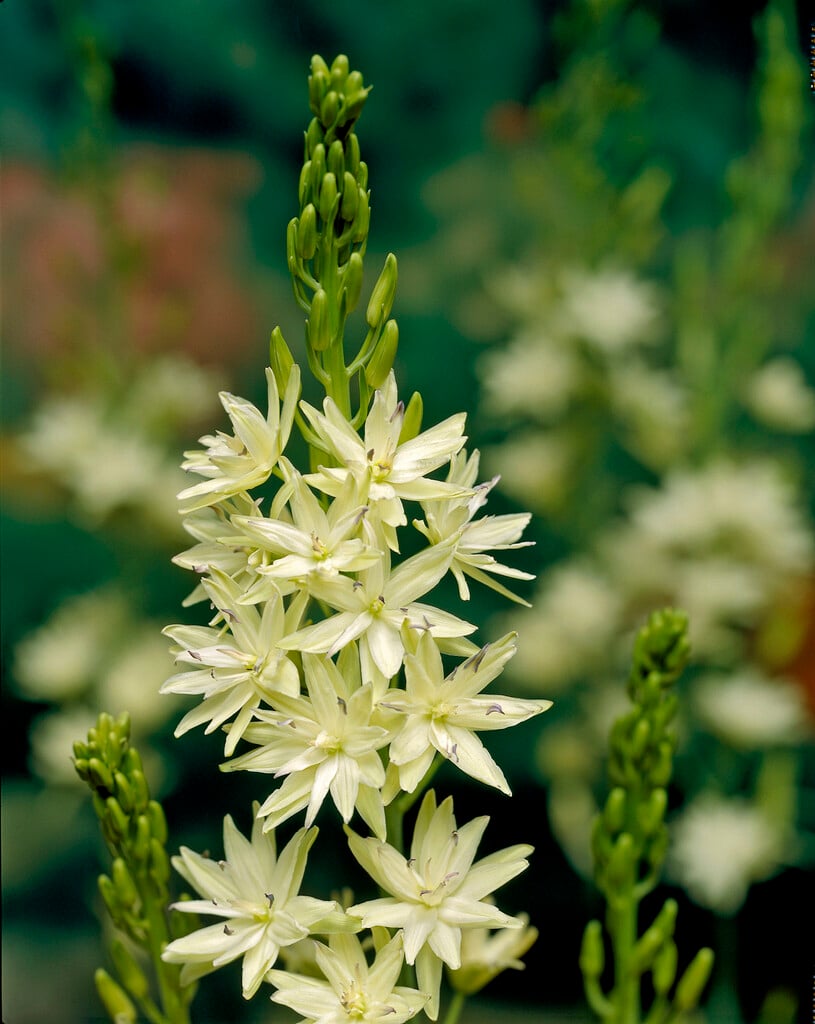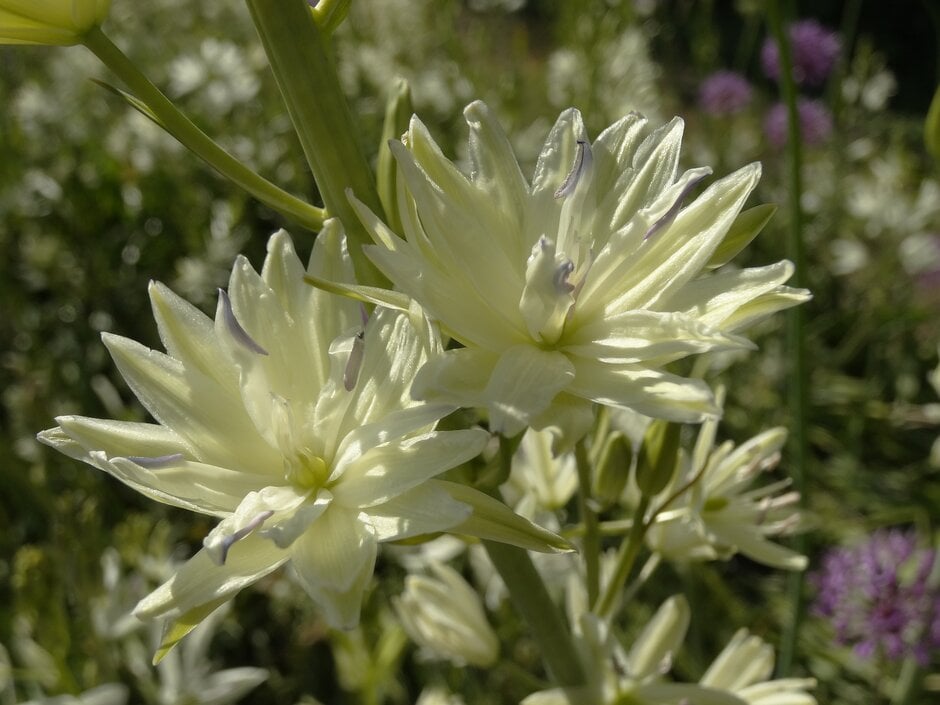Size
Ultimate height
1–1.5 metresTime to ultimate height
1–2 yearsUltimate spread
0.1–0.5 metresGrowing conditions
Moisture
Moist but well–drained, Well–drainedpH
Acid, Alkaline, NeutralColour & scent
| Stem | Flower | Foliage | Fruit | |
| Spring | Cream Purple White | Green | ||
|---|---|---|---|---|
| Summer | Cream Purple White | Green | ||
| Autumn | ||||
| Winter |
Position
- Full sun
- Partial shade
Aspect
North–facing or South–facing or East–facing or West–facing
Exposure
Exposed or Sheltered Hardiness
H4Botanical details
- Family
- Asparagaceae
- Native to GB / Ireland
- No
- Foliage
- Deciduous
- Habit
- Clump forming, Columnar upright
- Potentially harmful
- Ornamental bulbs - not to be eaten. Wear gloves and other protective equipment when handling. Pets: Ornamental bulbs - not to be eaten - see the HTA guide to potentially harmful plants for further information and useful contact numbers
- Genus
Camassia are bulbous perennials with narrow, channelled leaves and erect racemes of star-shaped violet-blue or creamy-white flowers in early summer
- Name status
Accepted
How to grow
Cultivation
Plant 10 to 15cm deep in autumn in fertile, humus-rich, moist but well-drained soil in sun or partial shade. Does not tolerate waterlogged conditions. Mulch in winter in cold areas. May have the potential to become a nuisance due to prolific self-seeding if not managed well
Propagation
Propagate by offsets
Suggested planting locations and garden types
- Wildflower meadow
- Coastal
- Cottage and informal garden
- Prairie planting
- Banks and slopes
- Flower borders and beds
Pruning
Deadhead faded flowers spikes
Pests
Generally pest-free
Diseases
Generally disease-free
Love gardening
Sign up to receive regular gardening tips, inspiration, offers and more
View our Privacy Policy
Get involved
The Royal Horticultural Society is the UK’s leading gardening charity. We aim to enrich everyone’s life through plants, and make the UK a greener and more beautiful place.

